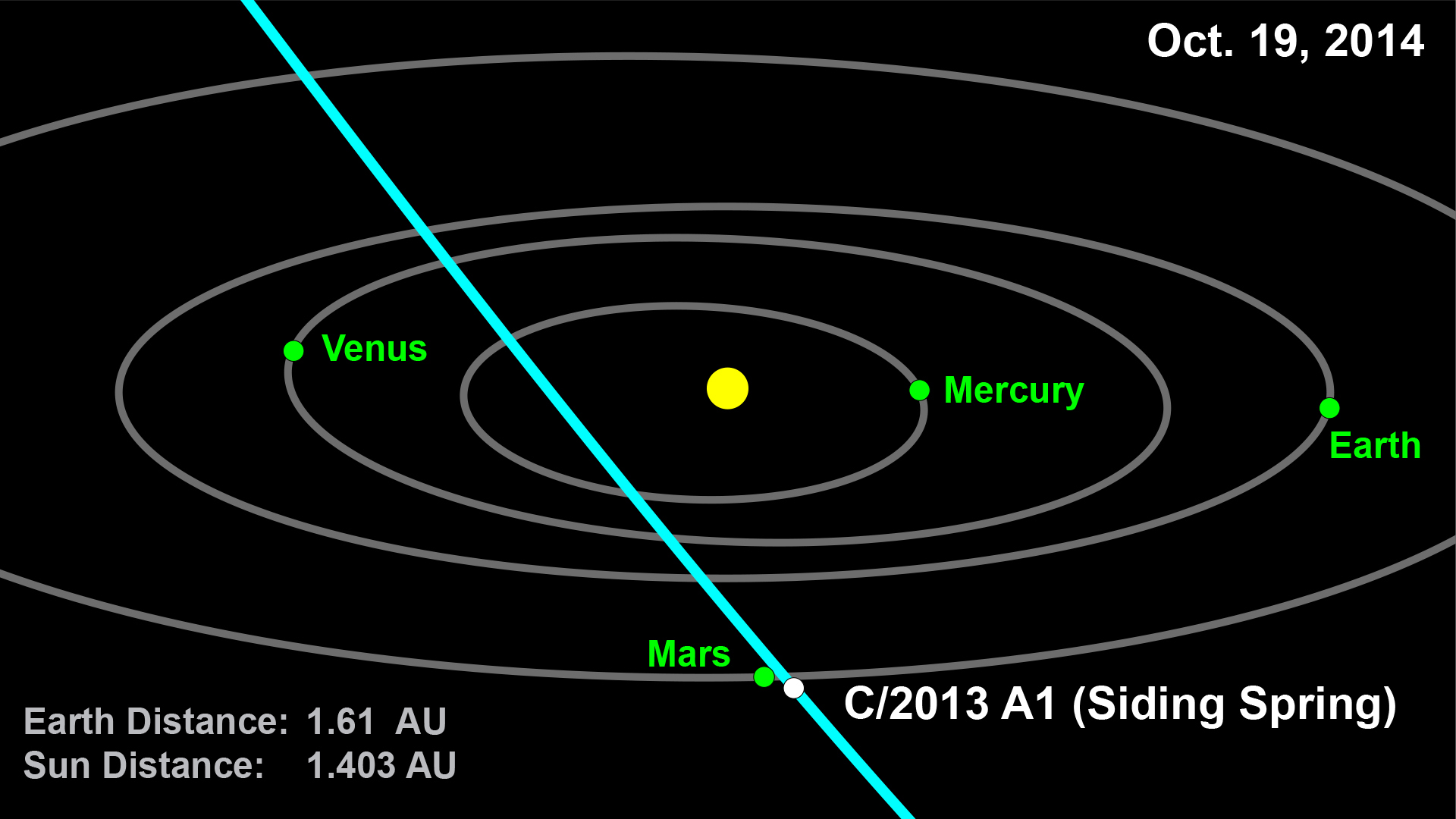
The unofficial "Year Of The Comets" has indeed opened and the excitement hasn't ended yet. According to NASA's Jet Propulsion Laboratory in Pasenda, California, a relatively new comet discovery might very well make a tantalizingly close pass by the planet Mars on October 19, 2014. How close? According the Near-Earth Object Program Office, it should come within 186,000 miles of the Red Planet and there's a strong possibility it might be much closer.
Discovered by Robert McNaught on January 3, 2013 at Siding Spring Observatory, New South Wales, Australia, Comet C/2013 A1 has been observed as far back as October 4, 2012. just a small step in time from millions of years it has taken for it to journey from the Oort Cloud into our solar system. At present, it is theorized this is the comet's first pass through our neighborhood and it is just one of many objects identified by "SpaceGuard" — an amalgamation of ground and space-based telescopes which search the sky for potential asteroids and comets that could pose a threat to Earth.
However, this time it isn't Earth that's in the danger zone. It's Mars.

Comet Trajectory Visualization Courtesy of NASA
By using "pre-recovery" archival observations taken by the Catalina Sky Survey, astronomers have been able to forecast the comet's orbital plot. By combining this data set with current observations, they have been able to provide fairly accurate estimates of where the comet is headed. As of the beginning of March 2013, the NEO program office predicts Comet Siding Spring may come as close as 31,000 miles (50,000 kilometers) to impact. While that sounds dangerous for Mars, it's well over twice the distance of the orbit of Deimos, the most distant Martian moon. As more observations are obtained, the calculations for Comet C/2013 A1's orbital path — and how it coincides with Mars' orbit — will become more exact. This should allow researchers to totally rule out a collision scene, but current probability still has the chances as less than a one in 600. That's pretty close odds!
We know that a comet crashing into a planet within our solar system is entirely possible. After all, it has only been roughly twenty years since Shoemaker-Levy 9 slammed into Jupiter. Even if Comet C/2013 A1 Siding Spring doesn't impact Mars, there's more to a comet than just the nucleus. It also will carry with it the coma and tail — a combination of volatiles which will be boiling away from it as it approaches Mars. Does that pose any danger for the space-placed instrumentation or the rover missions? According to comet expert Leonid Elenin, it is certain that Mars will pass through A1 Siding Spring's detritus. Even if these remains are as small as microparticles, the concentration will be far higher than design specifications ever planned for and the space probes could possibly malfunction as a result of this exposure.
Is Comet Siding Spring observable? If you were on Mars, it might reach a visual magnitude of zero, but here on Earth we'll be lucky if it reaches a binocular-possible magnitude 8. It's not going to happen soon, either. C/2013 A1 won't be a target for the amateur telescope until mid-September/October 2014 and you'll also need to be in the southern hemisphere to spot it.
For now, we don't have enough highly accurate information to make too many predictions of what may happen with Comet A1 Siding Spring. We don't know exactly how large it is, nor can we forecast how it will react as it nears the Sun. We do know the comet is cruising along at 35 miles per second (126,000 miles per hour) and that it appears to be headed towards Mars, but so much can change with very little notice. Our orbiting and ground-based probes might very well be witness to one of the most spectacular events in Mars' history!
And maybe not...


















